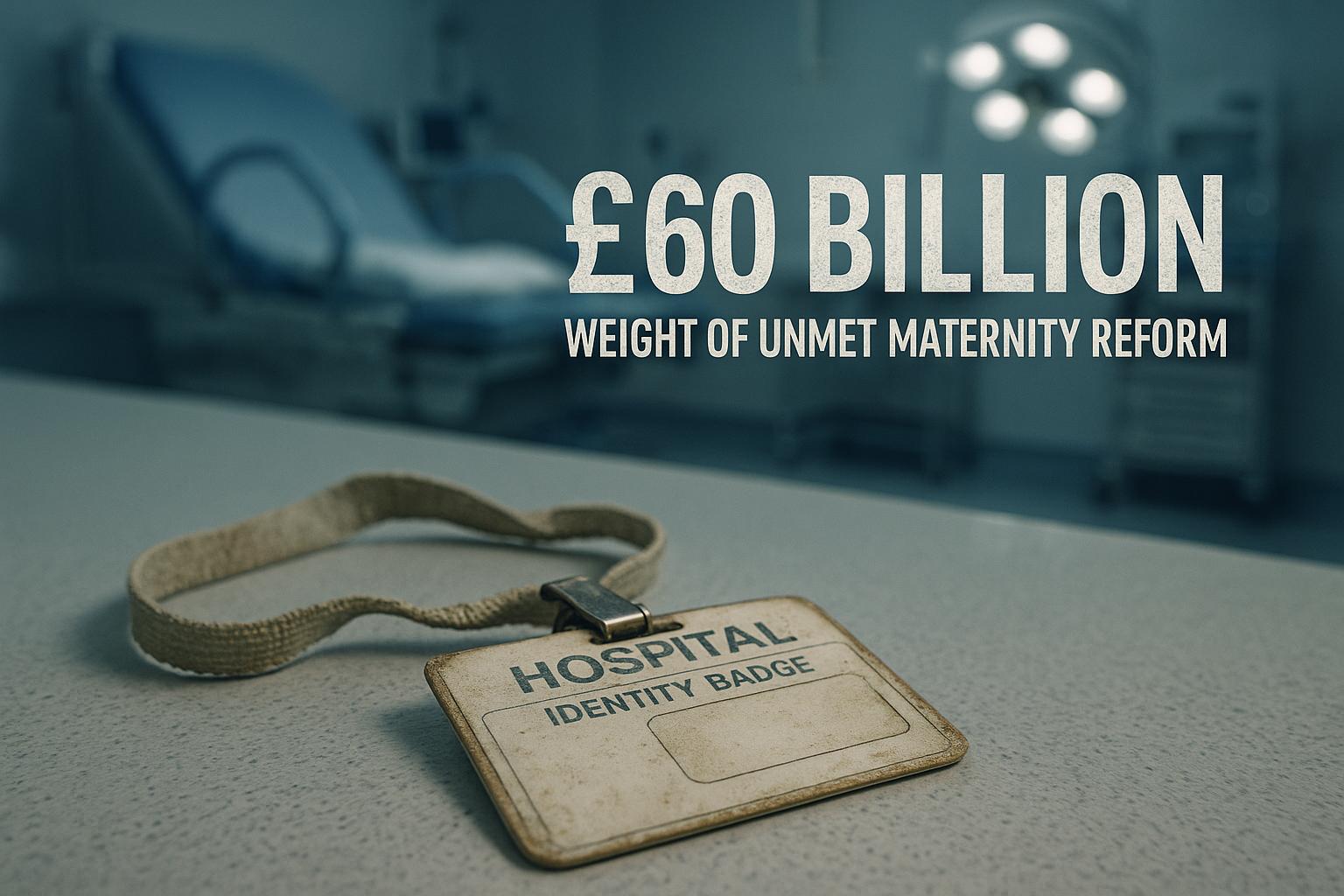The National Health Service’s (NHS) liabilities for medical negligence claims in England have surged to an unprecedented £60 billion, driven primarily by a steep increase in costly childbirth injury cases. According to a report by the National Audit Office (NAO), this figure has more than quadrupled since 2006-07 when liabilities stood at £14.4 billion, highlighting an alarming upward trajectory in the financial risks associated with clinical negligence settlements.
The NAO’s analysis reveals that certain high-value claims, particularly those involving maternity cases where babies suffer brain damage such as cerebral palsy, are significantly inflating costs. These childbirth injury claims, while fewer in number—1,016 cases during 2024-25—cost an average of £11.2 million each to settle and accounted for roughly £1.6 billion in payouts that year. This sum dwarfs the next most expensive categories of claims, with paediatrics and “other” injuries each costing under £350 million. The overall cost of clinical negligence settlements has risen from £1.1 billion in 2006-07 to £3.6 billion in 2024-25.
GP services themselves accounted for the highest number of settled cases—2,914 in 2024-25—although these tend to be less expensive individually. The number of settled clinical negligence cases nationally has also more than doubled in less than two decades, increasing from 5,625 in 2006-07 to 13,329 in 2024-25, reflecting a combination of rising claims and legal costs. While some specialties have seen a decline in the number of settlements, others such as maternity and radiology have experienced substantial increases, with the latter’s claims jumping nearly fivefold since 2006-07.
Government figures show that these rising costs are draining billions from NHS resources that could otherwise be spent on frontline services. Gareth Davies, head of the NAO, warns that despite some containment in claim numbers within certain areas, the soaring value of high-cost claims is pushing overall costs sharply higher for taxpayers. Geoffrey Clifton-Brown MP, chair of the Commons public accounts committee (PAC), described the escalating £60 billion liability as “astounding” and second only to public sector pensions in terms of government financial obligations.
The Department of Health and Social Care (DHSC) acknowledges the unacceptable rises in clinical negligence costs. A spokesperson stated the government’s commitment to overhauling patient safety systems and improving maternity care, emphasising that its 10-year health plan positions patient safety as a fundamental NHS priority. However, critics have pointed to long-standing failures in the system to prevent errors and contain costs, with the PAC previously criticising delays in addressing the problem.
Parallel to this, the NHS faces severe challenges maintaining its physical infrastructure. The cost of repairing and maintaining hospitals in England has soared to nearly £16 billion, a 16% increase from the previous year. NHS Providers’ chief executive, Daniel Elkeles, warned that NHS buildings are literally falling to pieces due to years of underinvestment, endangering patient and staff safety. The King’s Fund policy director, Siva Anandaciva, echoed concerns, noting that decrepit facilities contribute to disruptions in care, such as flooded corridors and reduced operating theatre capacity.
Further data from NHS Resolution indicates that in 2024-25 alone, the NHS paid out £3.1 billion in compensation for clinical negligence claims, up from £2.8 billion the previous year. Maternity claims accounted for £1.3 billion of that total, reflecting the disproportionate financial burden posed by obstetric negligence. Despite the growing costs, 83% of clinical claims were resolved without legal proceedings, highlighting efforts towards collaborative resolution and incident prevention.
The rising number of claims has been influenced by various systemic and societal factors, including the increased population of the UK and pressures following the pandemic. Since 2006-07, new claims against the NHS have increased by over 150%, with specialities like radiology and ambulance services showing particularly high growth rates in claim numbers.
These figures underline the critical need for continued reform in clinical safety and maternity care, as well as urgent investment in NHS infrastructure. Without addressing the root causes of medical negligence and the physical state of healthcare facilities, the NHS risks further escalating liabilities and compromised patient outcomes.
📌 Reference Map:
- Paragraph 1 – [1], [4]
- Paragraph 2 – [1], [2], [5]
- Paragraph 3 – [1], [6]
- Paragraph 4 – [1], [4]
- Paragraph 5 – [1], [2], [3]
- Paragraph 6 – [1], [6]
- Paragraph 7 – [1], [4]
- Paragraph 8 – [2], [5]
- Paragraph 9 – [6]
Source: Noah Wire Services
